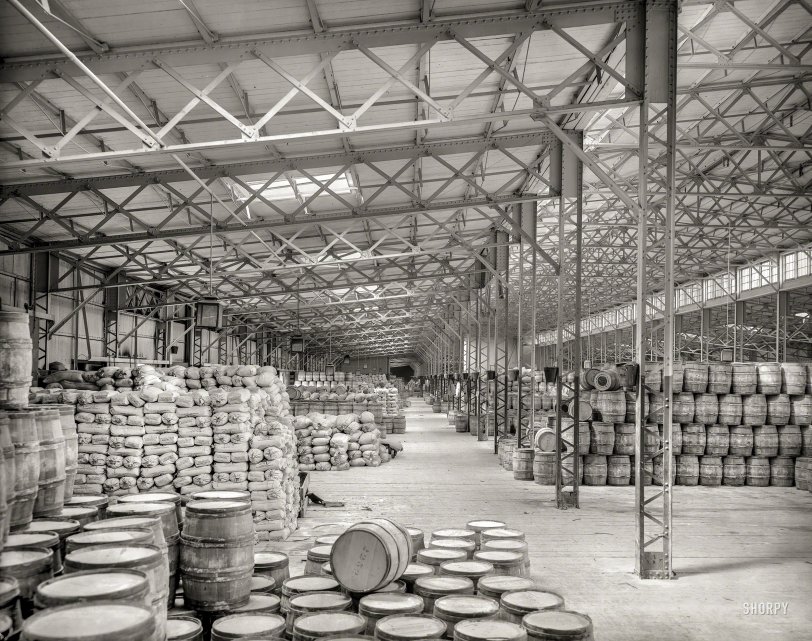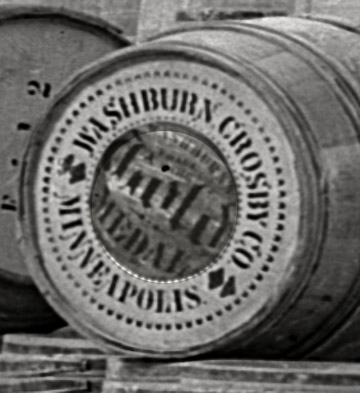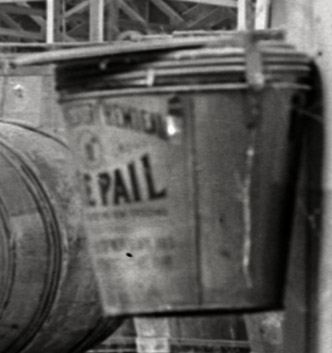


Framed or unframed, desk size to sofa size, printed by us in Arizona and Alabama since 2007. Explore now.
Shorpy is funded by you. Patreon contributors get an ad-free experience.
Learn more.

- Baldwin 62303
- Baldwin VO-1000
- Cold
- No expense spared
- Tough Guys
- Lost in Toyland
- And without gloves
- If I were a blindfolded time traveler
- Smoke Consumer Also Cooks
- Oh that stove!
- Possibly still there?
- What?!?
- $100 Reward
- Freeze Frame
- Texas Flyer wanted
- Just a Year Too Soon
- WWII -- Replacing men with women at the railroad crossing.
- Yes, Icing
- You kids drive me nuts!
- NOT An Easy Job
- I wonder
- Just add window boxes
- Icing Platform?
- Indiana Harbor Belt abides
- Freezing haze
- Corrections (for those who care)
- C&NW at Nelson
- Fallen Flags
- A dangerous job made worse
- Water Stop
Print Emporium
Early Amazon: 1900

Circa 1900. "New York Central freight sheds, Buffalo, N.Y." 8x10 inch dry plate glass negative, Detroit Photographic Company. View full size.
Yup! Same Washburn
The largest explosion in Minneapolis' history was the 1878 explosion of the Washburn "A" Mill in downtown Minneapolis. 'Twas heard 10 miles away in St. Paul.
Ka-boom?!?!?!
When I was working in a supermarket in the late 1960s, we kids who worked there would amuse ourselves by taking bags of flour, tearing a big hole in them, lobbing them into the incinerator, and then quickly slamming the steel incinerator door shut.
The resulting explosions were powerful enough to bend the half-inch-thick steel door of the incinerator.
So I shudder to think of a flour warehouse with open-flame lighting. That stuff is dangerous.
EDIT: Here's our good friend, Mr. Wizard, explaining how flour dust can be explosive:
https://www.youtube.com/watch?v=8t5iTunRkO4
Gas light district
Are those gas lamps hanging from a pipe?
round bottom
it looks to me as at least the fire buckets i can see in the image that none have rounded bottoms all fire buckets i have ever seen had rounded bottoms that i believe the purpose being that it forced one to hang it up and thus readily available for use and not have to search for one. another words hang it up or it tips over and loses its contents and it hung up if itd empty it is deemed useless for fire. anyone have different on what i just said and how it might tie into these buckets being flat i believe.
[leading candidate for this years ee cummings commenting fellowship way to go man - dave]
"Slack Barrels"
Made with thin fir staves tongue and groove jointed, and with sapling hoops, these were called slack barrels, and they wouldn't hold a liquid for five minutes. They are indeed flour barrels. A crepe-like paper liner inside each barrel prevented sifting the flour out between the stave joints.
Washburn Crosby Co of Minneapolis produced their Gold Medal Flour in Minneapolis, and eventually became General Mills - still producing Gold Medal Flour a century and a half later.
Life before forklifts
It's weird to see a warehouse look so light, airy, and neat. Today, forklifts allow warehouse-men to lift items to dizzying heights, making sure that the only light available is artificial. And with rare exceptions, nobody would dare put a wood floor in a warehouse--you'd wear right through it, and quickly, with the tires of your forklifts.
That noted, the frame of the building looks about the same as today. The big difference is you'll get a lot more lights hung from it, and instead of rivets, they're often welded.
State of the art architecture.
I'm no historian of architectural engineering, but the construction of this warehouse must have been state of the art for 1900.
Just the sacks
Gold Medal - flour, still today.
I wonder what's in the barrels.

Vermin alert
With that many sacks of flour stacked that deep, I hope they have a couple of hungry cats hanging around.
Gold Medal flour
Still a brand today, but, pretty sure, this isn't how it's stacked these days!
Flour Is Blooming
Gold Medal Flour was my mother-in-law's favorite brand. My wife still uses it today.
Thoroughly modern
If you take away the barrels, the sacks, the hanging lamps, and the buckets of sand, this warehouse looks uncannily modern. Something about the crisp, even brightness and the light, metal structure.
Lots of manpower needed
Can't imagine how many man-hours went into stacking just the sacks on the left, not to mention the thousands of barrels!! I believe I see a couple of them whose efforts helped make this scene so compelling over a century later.
Safety First
A sand-filled bucket 10 feet off the floor on every column for fire control.

























On Shorpy:
Today’s Top 5